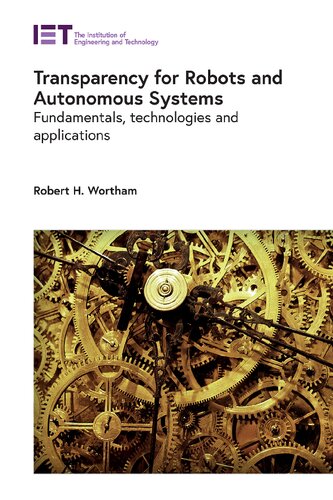

Most ebook files are in PDF format, so you can easily read them using various software such as Foxit Reader or directly on the Google Chrome browser.
Some ebook files are released by publishers in other formats such as .awz, .mobi, .epub, .fb2, etc. You may need to install specific software to read these formats on mobile/PC, such as Calibre.
Please read the tutorial at this link: https://ebookbell.com/faq
We offer FREE conversion to the popular formats you request; however, this may take some time. Therefore, right after payment, please email us, and we will try to provide the service as quickly as possible.
For some exceptional file formats or broken links (if any), please refrain from opening any disputes. Instead, email us first, and we will try to assist within a maximum of 6 hours.
EbookBell Team

4.1
30 reviewsBased on scientific understanding and empirical evidence of how humans understand and interact with robotic and autonomous systems, the author reviews the concerns that have been raised around the deployment of AI and robots in human society, and the potential for disruption and harm. He explains why transparency ought to be a fundamental design consideration for Human Computer Interaction (HCI) and artificial intelligent systems. Starting with a survey of global research in the field and what transparency means in the wider context of trust, control and ethics, the author then introduces a transparent robot control architecture, and the impact of transparency using real-time displays. He presents a case study of a muttering robot, and covers current and upcoming standards for transparency, as well as future perspectives for the design, manufacture and operation of autonomous robotic systems.
Specifically, chapters cover transparency in the wider context of trust; a transparent robot control architecture, the impact of transparency using real-time displays, transparency using audio - the Muttering Robot, the effects of appearance on transparency, synthesis and further work, and several examples of Instinct reactive planner commands.
This book provides key insights into transparency in robots and autonomous systems for industry, academic researchers and engineers working on intelligent autonomous system design, human robot interaction, AI, and machine ethics. It also offers points of interest for professionals developing governmental or organisational policies and standards for the design of intelligent autonomous and AI systems, and government and standard bodies working in the emerging applications of AI.